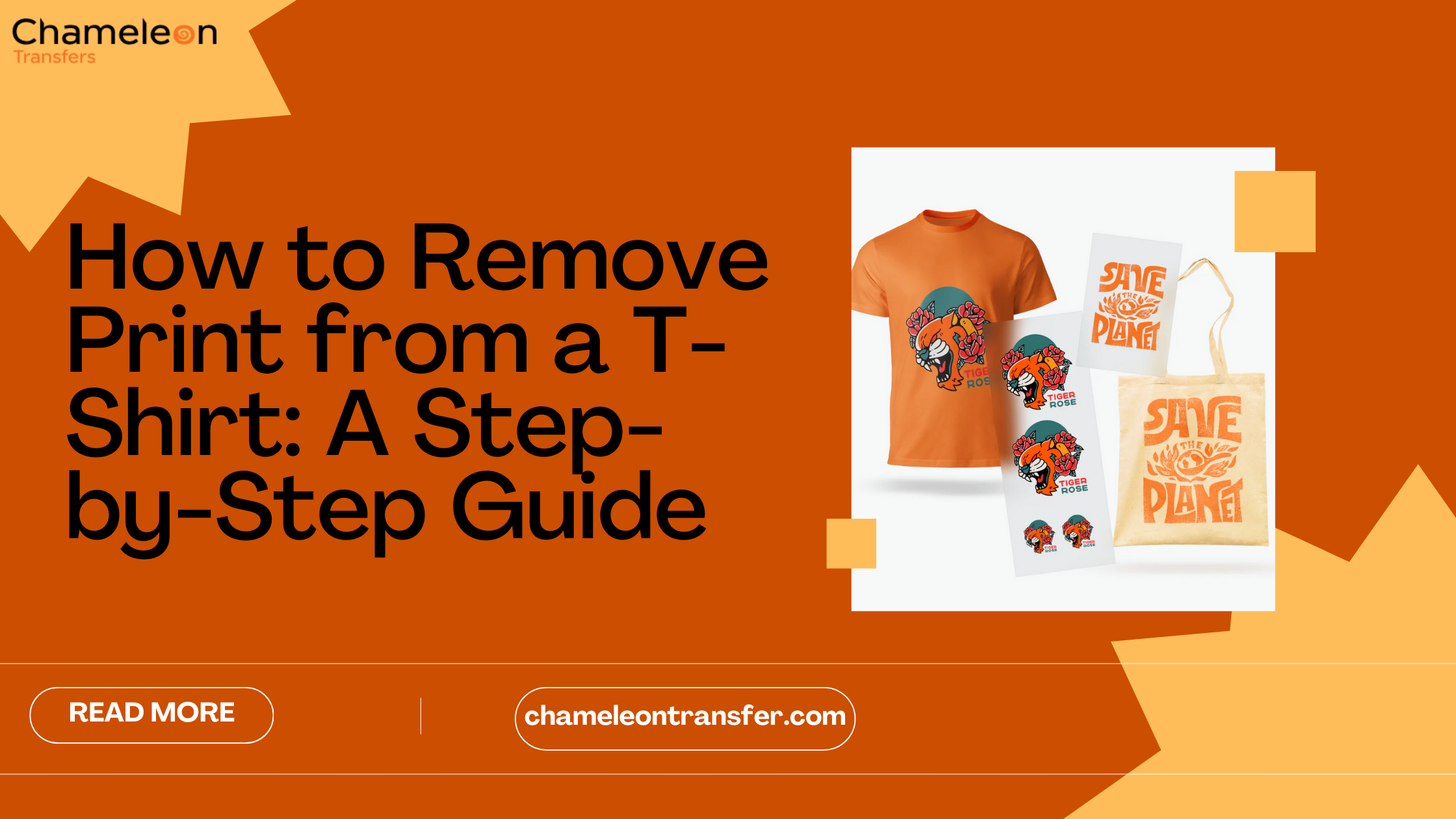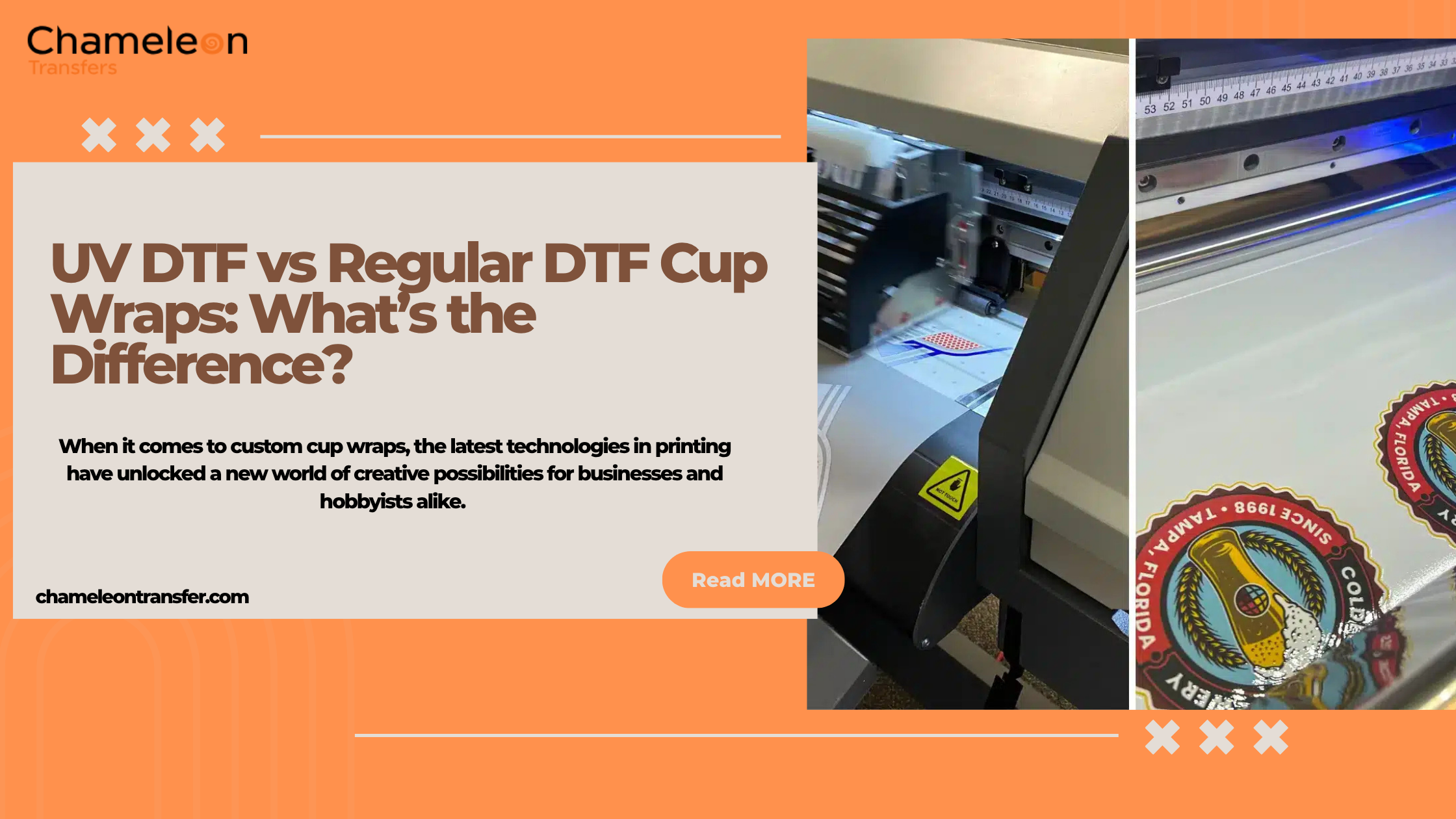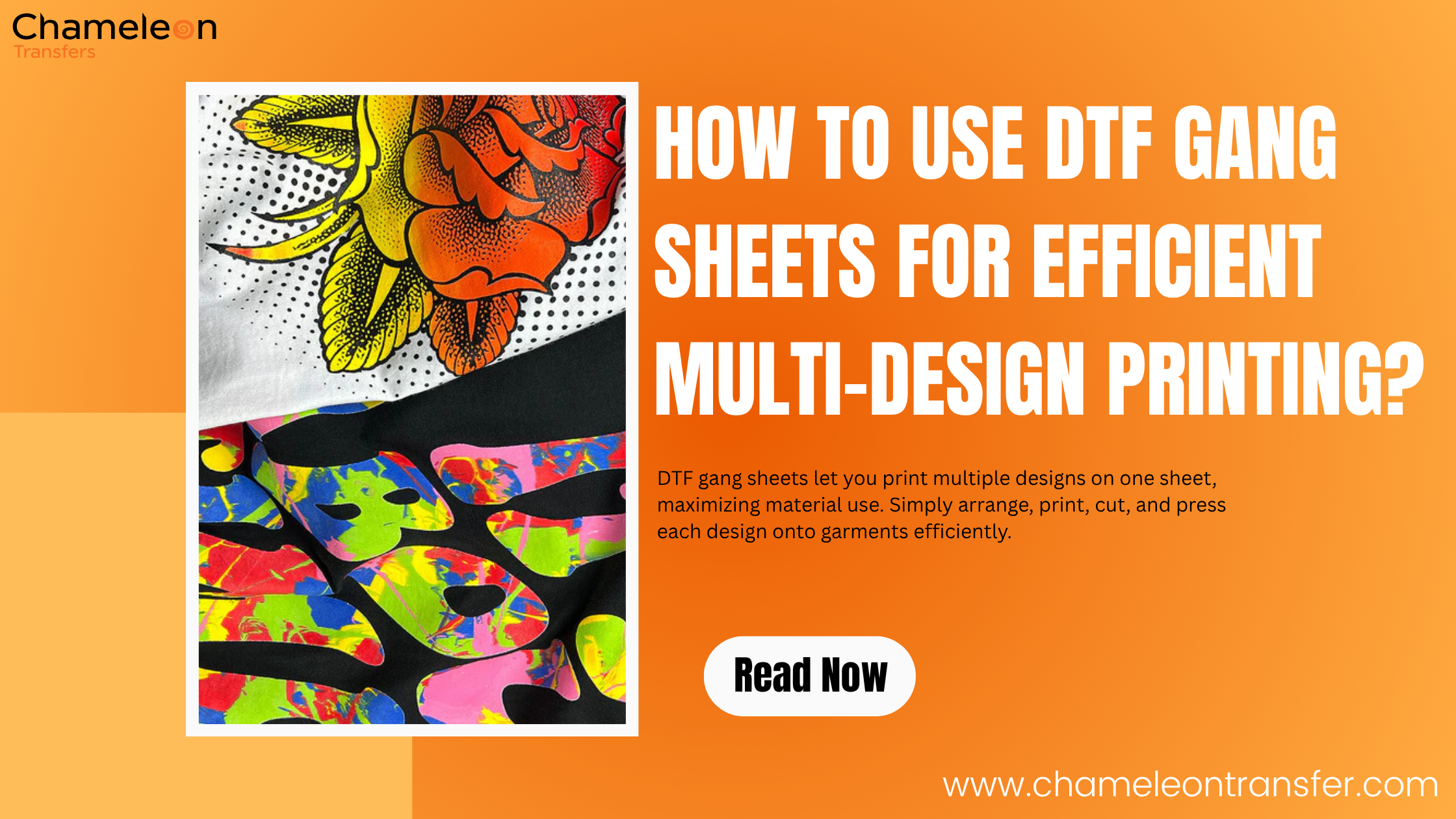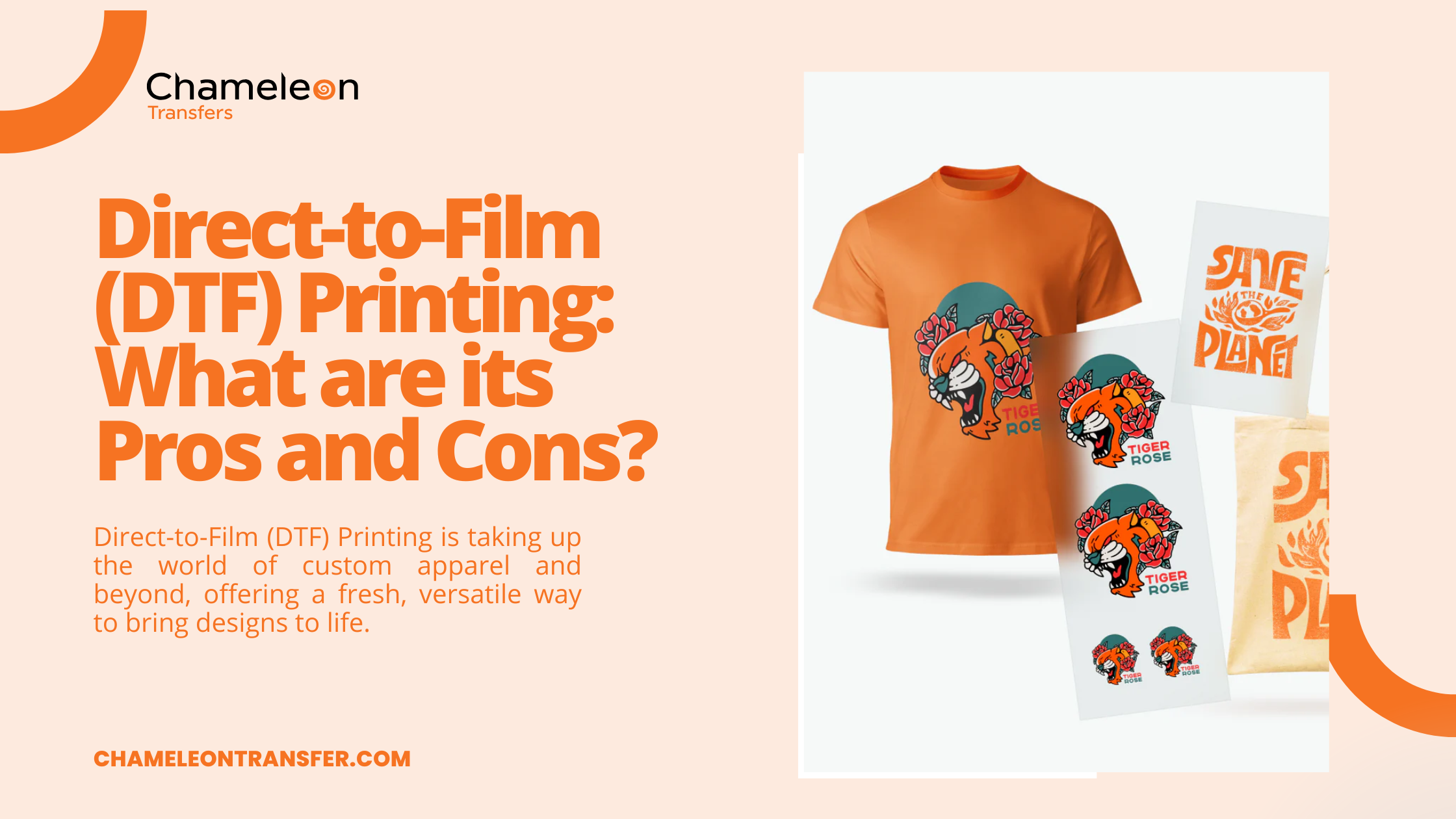Can you create DTF transfers without using an expensive heat press? The answer is yes! You can get deep, durable prints using a DTF regular iron, the same one you already have at home!
Direct-to-Film printing or DTF is changing custom apparel, allowing you to transfer stunning designs onto various fabrics. While professional setups use DTF printers and heat presses, you don’t need expensive equipment to get started. This guide will show you how to apply DTF transfers with an iron, ensuring high-quality results on a budget.
We’ll cover everything from: what is DTF printing regular iron to DTF transfer application techniques, along with expert tips for flawless prints. So, if you’ve been wondering, "Can you use an iron for DTF transfers?” then grab your iron, and let's get started!
Introduction to DTF Printing with a Regular Iron
If you are curious about DTF iron-on transfers but don’t have a heat press? No worries! You can still create vibrant, professional-quality designs using a DTF regular iron—the same one you use to remove wrinkles in your clothes!
While many people rely on expensive heat presses, you don’t need one to start applying DTF prints without a heat press. A DTF iron-on transfer works just as well with the right technique. The key is understanding the pressure needed for DTF application and controlling the heat evenly.
This method is ideal for small projects or beginners looking for a budget-friendly way to work with DTF transfer sheets ready to press. And don’t worry about quality—when done with precise methods, the softness and durability of DTF prints remain just as impressive as those made with professional equipment.
Can You Use a Regular Iron for DTF Printing?

Yes! DTF printing with a regular iron is a fantastic way to create stunning iron-on decals for sweatshirts without investing in expensive equipment. With the correct technique, you can achieve vibrant and long-lasting prints by applying DTF transfers with an iron at the correct DTF on cotton temperature.
This hands-on approach gives you full control over heat and pressure, making a DTF regular iron perfect for small projects and beginners.
How does DTF Regular Iron Work for DTF Printing?
Using a DTF regular iron for DTF printing is an easy and budget-friendly way to apply transfers. Here’s how it works:
- DTF printing with an iron is a budget-friendly option, perfect for beginners and small-scale projects.
- A DTF regular iron allows you to apply DTF heat transfers ready to press without needing a heat press.
- With careful handling, DTF transfers with an iron can produce high-quality results similar to professional heat presses.
Proper heat and pressure ensure strong adhesion for iron-on DTF transfers on various fabrics.
Step-by-Step Guide: DTF Printing with a Regular Iron
If you're new to DTF printing and want to create custom clothes without investing in heat presses, a DTF regular iron is a great alternative. Follow this step-by-step DTF transfer with iron guide on how to apply dtf transfers.
Step 1: Prepare the Fabric
Ensure your garment is clean and wrinkle-free before you print an iron-on transfer. Use the iron’s steam function or a separate steamer to smooth out the fabric for better adhesion of the DTF film.
Step 2: Set the Right Iron Temperature
Adjust your iron settings to the correct DTF curing temperature. Most DTF iron-on transfers require around 300-315 degrees Fahrenheit, but always check the film’s recommended best heat settings for DTF with iron. Let the iron heat up fully before applying the design.
Step 3: Position the Transfer Film
Place the transfer film on the fabric in the desired position. To protect both the design and the iron, lay a sheet of parchment paper over the transfer. This prevents sticking and helps with heat distribution.
Step 4: Apply Heat and Pressure
Firmly press the iron onto the transfer, ensuring even heat distribution. Move it slightly to cover the entire design, maintaining the pressure needed for DTF application. Hold it in place for about 10-13 seconds for optimal adhesion.
Step 5: Let It Cool & Peel
Once the pressing is complete, allow the design to cool slightly before carefully peeling off the DTF film. Cooling ensures the print bonds properly, leaving you with a high-quality iron press shirt.
Also Read: DTF Film Damaged Roll How to Fix?
DTF Printing with an Iron vs. Heat Press: Which One is Better?

When considering DTF printing, the choice between using a heat press vs. regular iron for DTF depends on your requirements, financial plan, and the scale of your project. Both techniques applies heat to transfer designs onto fabric, yet they differ significantly in terms of efficiency and longevity.
1. Using a Regular Iron for DTF Printing: This method is one of the most accessible alternative methods for DTF transfers perfect for beginners or smaller projects.
A DTF regular iron can successfully transfer DTF film and adhesive, although it requires manual pressure and careful heat application to achieve optimal results.
2. Heat Press for DTF Transfers: DTF printers are usually combined with a heat press, which delivers uniform heat and pressure for superior quality and durable transfers.
A heat press guarantees consistent adhesion of DTF film and adhesive, making it well-suited for large-scale production and professional applications.
Common Problems and How to Fix Them Using Regular Iron in DTF Printing
While DTF printing with a regular iron is a great alternative to DTF printers, it can sometimes lead to issues like peeling, uneven transfers, or poor adhesion. Here’s how to fix them:
1. Print Peeling Off After Washing: This can happen if the transfer isn’t fully cured. Try pressing the design again with the iron and ensuring proper heat distribution.
2. Fabric Burns or Scorch Marks: Overheating the fabric can lead to burns. Always follow recommended temperature settings and use a protective layer like parchment paper.
3. Design Not Sticking Properly: If your DTF transfers with an iron aren’t adhering well, check the temperature and pressure. Ensure you're applying firm, even pressure and using the correct heat settings.
Conclusion: Is DTF Printing with a Regular Iron Worth It?
Yes! DTF printing with a regular iron is a budget-friendly and accessible way to create custom designs without investing in expensive equipment. While a heat press offers more consistency, a DTF regular iron can still deliver fantastic results with the right technique.
At Chameleon Transfers, we’re all about making creativity easy and accessible. Whether you're customizing apparel or designing unique decor, our high-quality DTF transfers help you achieve stunning results.
Turn your ideas into reality! Shop our premium DTF transfers and start creating today!
FAQs
1. Can I make my own iron-on transfers?
Yes! You can print an iron-on transfer using DTF film and apply it with a DTF regular iron for custom designs on fabric. Just ensure proper DTF curing temperature for lasting results.
2. What is the difference between iron-on and heat transfer?
Iron-on transfers use heat from an iron press for shirts, while heat transfer involves heat presses for even heat distribution and better durability in custom clothes printing.
3. Can you use a regular iron for DTF?
Yes! Applying DTF prints without a heat press is possible using a DTF regular iron. Proper iron settings and pressure needed for DTF application ensure a smooth transfer.
4. Can a regular printer be used for DTF printing?
No, standard printers can’t print DTF iron-on transfers. You need a DTF printer that supports DTF heat transfers ready to press using specialized DTF ink and transfer films.
5. What is the difference between DTF ink and regular ink?
DTF ink is designed for DTF printing, bonding with DTF transfer sheets ready to press for vibrant, durable prints, while regular ink is water-based and not suitable for fabric transfers.
Read More Blogs:









